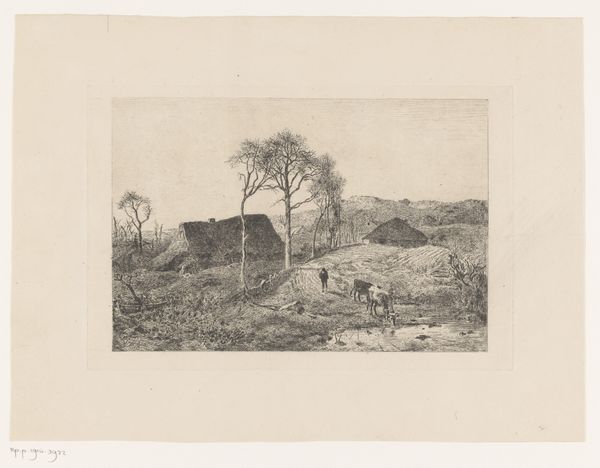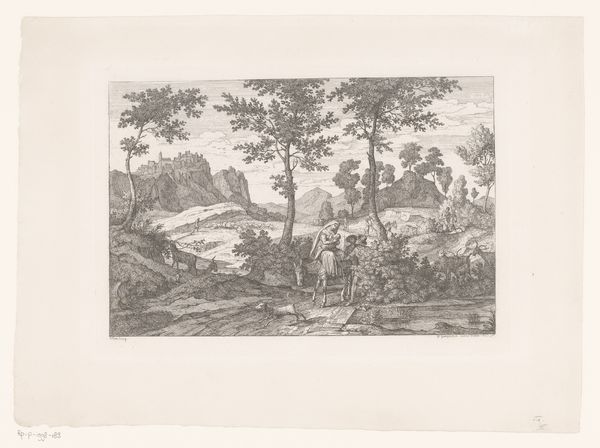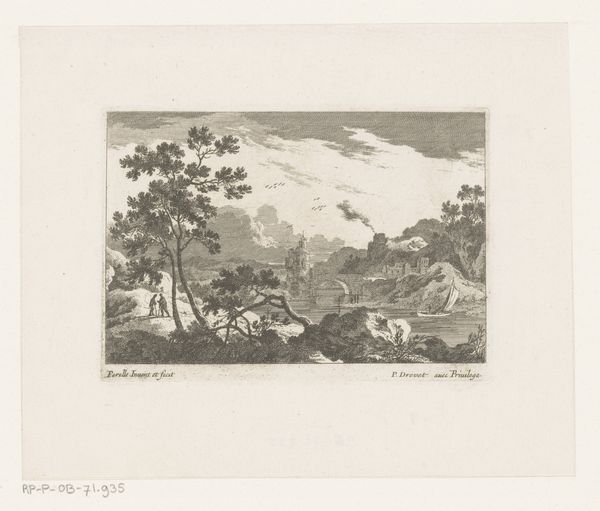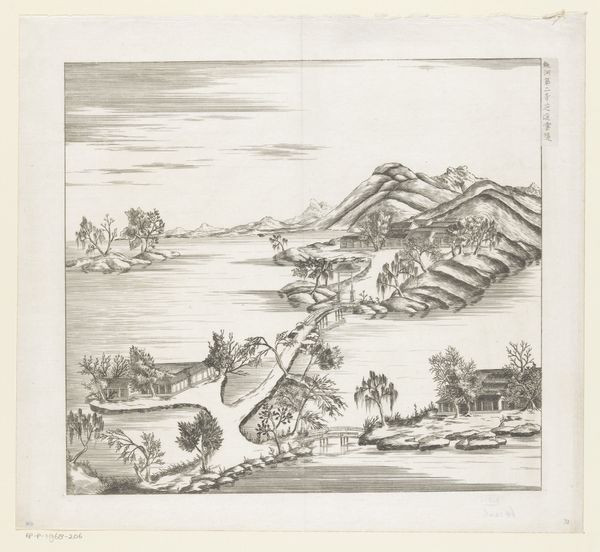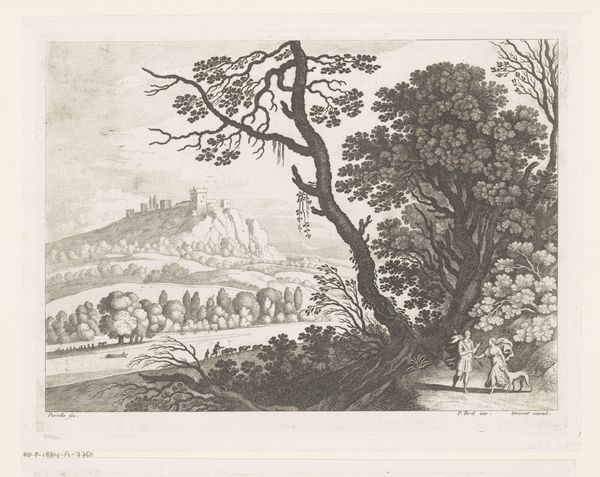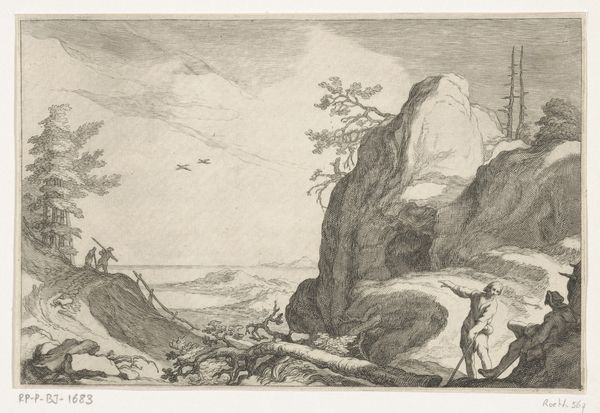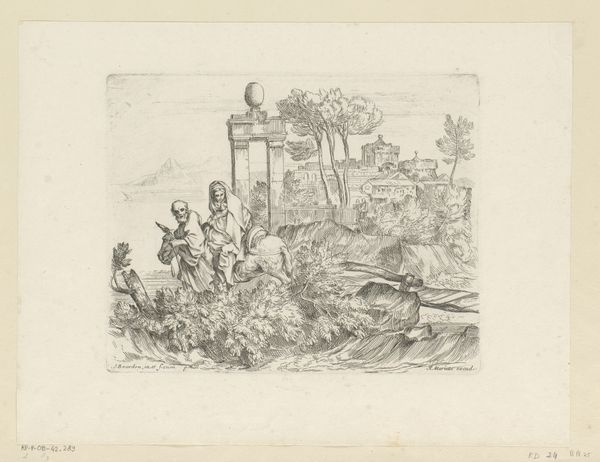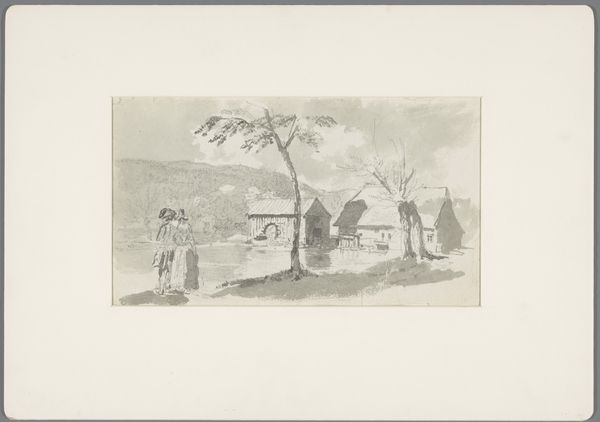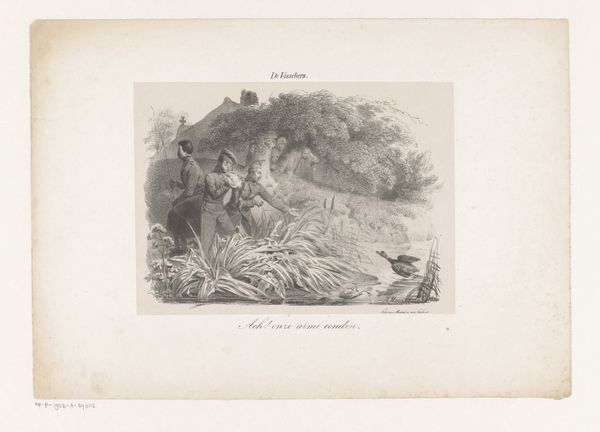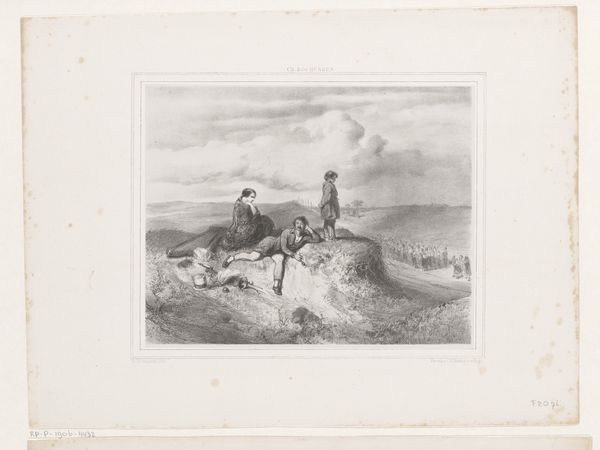
watercolor
#
landscape
#
watercolor
#
coloured pencil
#
orientalism
#
watercolour illustration
Dimensions: height 446 mm, width 573 mm
Copyright: Rijks Museum: Open Domain
Editor: We're looking at Carl Wilhelm Mieling’s "Vulkaan Gede te West-Java" from 1854, rendered in watercolor. There's this striking contrast between the looming volcano and the small human figures in the foreground; it's serene and unsettling simultaneously. What catches your eye about the visual elements here? Curator: Immediately, it's the calculated division of space. Observe the almost geometric partitioning of the picture plane – the volcanic mountain set against the human activities, dividing nature against culture. What is interesting is how the foreground vignette interacts with the background image; it is like two contrasting yet complimentary tableaux. The materiality, especially the watercolor medium, plays a key role in softening these stark contrasts, almost romanticising it. Note the formal arrangement. Does it reveal any tension to you? Editor: Well, the volcano, a potential source of danger, seems quite distant, almost unreal, due to the soft washes. Yet, the people seem very grounded, almost unaware. It makes me wonder if it implies some narrative? Curator: Precisely. The artist masterfully uses the principle of scale to further draw our eye toward the background’s grand geological scale. While this invites a theoretical reading of geological transformation vs the relative scale of humanity, consider the texture. Is it just the nature of the watercolour? Or does it reveal any intent from the artist? Editor: The tree textures seem quite heavy on one side compared to everything else in the illustration. This helps ground the composition, otherwise everything would drift. Curator: Indeed, the very placement of the humans is vital. By framing them in relation to the great volcano behind them, they establish a complex interplay. And yet, even more fundamentally, this piece provides much for discourse on visual art practice itself. What does this reveal? Editor: I now see how the formal qualities—line, color, and composition—converge to make this landscape more about perception than just scenery. I appreciate how carefully Mieling used formal elements to highlight visual contrasts and tension.
Comments
No comments
Be the first to comment and join the conversation on the ultimate creative platform.
